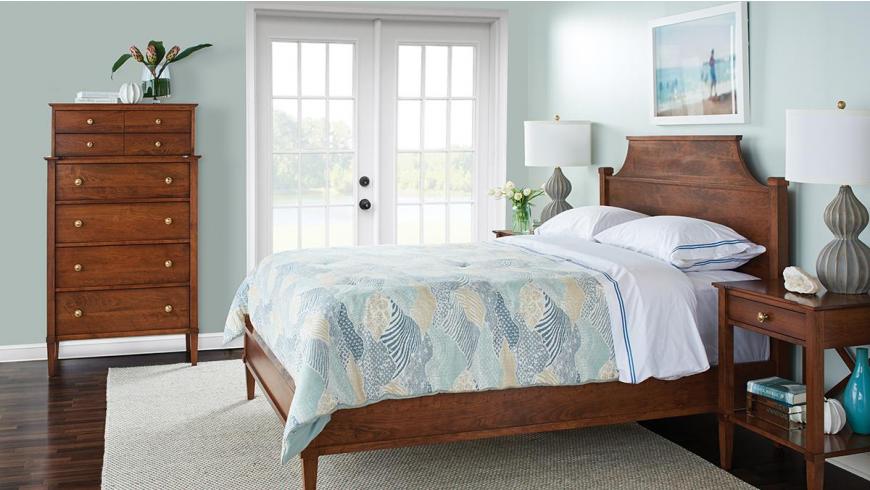How to Choose The Right Mattress Height For Your New Bed
With so many mattresses of various heights, foundations and toppers to consider, deciphering it all to create the most aesthetic and practical bed/mattress arrangement can seem like a nightmare.
Gat Caperton sympathizes with the struggle: “For a time it was thicker mattresses, and then thin was in. What’s popular keeps changing. At Gat Creek we’re also challenged by the fact that we make beds that last for many years. The homeowner may go through several mattresses over the life of the bed. Who knows what will be in fashion? Fortunately, today, mattresses mostly fit into a range. The comfort of a 10-inch mattress isn’t so different from a 12-inch mattress.”
Our website hosts a helpful guide showing the measurements of our beds. Knowing the critical dimensions of your new bed and its recommended total bedding height, you can easily select which components combined-mattress, foudation (i.e. box spring if you use one) and topper (if you use one)- will provide your desired look and sleeping surface height.
Sleeping height, for the longest time, was about warmth. When houses were drafty and floors were cold, a higher bed meant a warmer night’s sleep. Better HVAC, warming climates, consumer tastes gravitating toward transitional and contemporary may have lowered beds, but consumer tastes vary. Gat Creek meets these wide consumer preferences with a full range of beds, from traditional to modern platforms.
A traditionalist might choose from our standard height beds where a 10-inch foundation and 10-12 inch mattress would achieve the traditional sleeping surface height of approximately 30 inches off the floor. In a contemporary bedroom, our low platform bed slats sit 12 inches off the floor. This homeowner likely prefers the lower profile and so rejects a box spring foundation. But she may choose to use a bunkie board, which is a thin, solid foundation that distributes weight equally over the slats.
Your ideal sleeping surface height is a purely personal choice, balancing the look you want with usability. For instance, a low-profile platform bed might make your heart flutter, but if your uncooperative knees make getting out of bed every morning a struggle, you may want to go higher.
When considering nightstands to complement your bed, you might use the same principles. “Tom Seely, the man who I purchased the company from, preferred a nightstand that was a good bit higher than the bed,” Gat said. “Because he just wanted to roll his head, not lift it from the pillow, to read the alarm clock.
“What’s important is that you think about scale in the way the bed and nightstands work together,” Gat continued. “There is no hard and fast rule, so we make nightstand groups in 24, 26 and 30 inch heights.” Rest easy, all these choices mean there’s a perfect combination just for you.
Chat, call or email and let us know if we can help.

